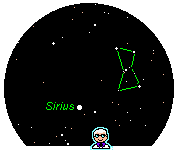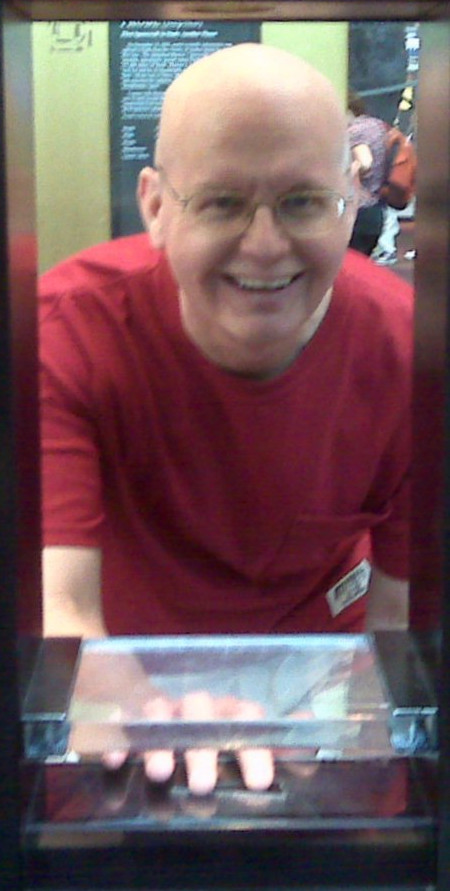 |
Principles of AstronomyFrequently Asked Questions - Answered! |
 |
 |
Principles of AstronomyFrequently Asked Questions - Answered! |
 |
Return to top of FAQs.
Not really.
This course was originally designed as a one-year program that begins in January and follows the night sky as it moves throughout the year. Many folks asked that Dr Love tweak the lessons a bit in order to make them relevant year-round. That he has done. You can start the lessons anytime of year but understand that some of the objects will not be in the positions suggested unless you are viewing them during that "titled month".
Return to top of FAQs.
Yes.
Students will learn how to identify the bright stars and obvious constellations as seen from the Northern Hemisphere but there is a lot of "southern exposure" in the course. There's also a lesson about the night sky as seen from the South Pole. The course is "northern biased" but about one in five of students are in the Southern Hemisphere. The sky is "upside down" but they seem to get used to it.
There are many wonderful sights in the night sky as seen from the far south including our nearest neighbor (Alpha Centauri), nearest galaxies (Magellanic Clouds) and many other interesting objects!
And, of course, the fundamentals of Astronomy - the physics - are the same.
Return to top of FAQs.
Who is the author/teacher and what are his credentials?
Dr Jamie Love  created Principles of Astronomy.
created Principles of Astronomy.
 (National Air and Space Museum in Washington, DC). |
Jamie's interest in Astronomy started with the Apollo moon landings. In 1974 he worked at the Maryland Science Museum and spent his lunch break in the planetarium, enjoying the shows and learning his way around the night sky.
During the summers of 1976 to 1978, while working for the US Parks Service, Jamie taught high-schoolers to identify the stars and constellations, organised meteor surveys and used a Celestron Telescope to show them craters on the Moon, the ice caps of Mars, phases of Venus, Jupiter and its Galilean moons, Saturn and its rings, the Andromeda Galaxy and lots more.
Dr Love earned his PhD in Biochemistry and Molecular Biology from Louisiana State University Medical Center (New Orleans) in 1990 and moved to Scotland, a part of The United Kingdom. (The best part!
Dr Love started Merlin Science in 1995 - teaching chemistry over the Internet.
The following year he published "Principles of Alchemy", his first self-paced, self-learning "hypertextbook". It has become particularly popular among home schoolers.
In 1998 Dr Love joined the Department of Life Sciences at Napier University (Edinburgh) teaching a variety of subjects and developing the department's flexible (distant) learning modules. In that role Dr Love has acted as editor and coordinator of several distance learning books. In June of 2000 Napier University awarded Dr Love the Postgraduate Certificate in Teaching and Learning in Higher Education. This certificate is awarded to those who complete a series of classes, workshops, peer review and an educational project. Jamie chose as his project to create a web-based, self-learning minicourse in evolution.
|
When he is relaxing, Jamie enjoys bird watching, fossil collecting, and stargazing.
Return to top of FAQs.
Tell me more about the exams.
Each quarter (12 lessons) ends with two self-evaluation exams. Each exam is composed of 20 questions answered by multiple choice - a total of 160 questions for the entire course. Jamie wrote the three wrong choices to represent common errors or misunderstandings that the student might have. That makes the choices harder but it also means a wrong answer, with the feedback provided, is a learning experience. The only drawback of this immediate feedback is that the student is then free to change the answer. However, that is not the point. Jamie does not write exams that are meant to merely generate a score - they are meant to help the student. Exams without feedback are easy for teachers to grade but provide no learning for students. Dr Love believes that learning continues into the tests.
After completing the exam, the student submits it and the computer generates a "virtual page" that shows the grade and scores each answer as "Right" or "Wrong". The student can jot down which ones were wrong and close the "virtual page". The exam will have been reloaded so all the previous answers have been wiped away. At this point the student has two options - take the entire exam all over again (choosing all 20 responses) or click the web browser's "Back Button" to reload all the previous answers from earlier, including the wrong ones, and change them. Regardless of which method used, the student is given plenty of opportunities to correct errors and submit a "perfect" test. (Please note that the "virtual page" does not print from most web browsers because it is not "seen" by the printer. It is not a real web page because it is generated "on the fly".)
Of course, the student is on the "honor system" and the exams are meant to encourage the student to continue while providing some incentive to achieve a perfect score. Note : students can take the exams as many times as they like but there is no way to save answers. That is, once you turn off the web browser the answers are gone forever. Dr Love experimented with ways to save these exams on the hard disk but it is difficult to get one method that to work across all platforms (PCs and Macs) correctly and consistently. Also, most folks do not like the idea of software writing on the disk and it tends to set off the virus alerts!
Return to top of FAQs.
Return to top of FAQs.
The promise of clear skies! 
Return to top of FAQs.
What about copyrighted materials, site licenses and stuff like that?
 |
In 2017, Jamie formally retired from his post at the University of Edinburgh and the following year decided to give his courses away for all to enjoy. His hypertextbooks (courses) are licensed under a Creative Commons Attribution-ShareAlike 4.0 International License.
|
Return to top of FAQs.